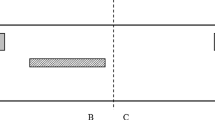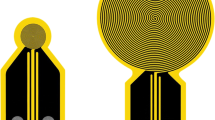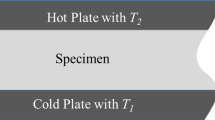Abstract
An apparatus developed for the measurement of thermal conductivity of solids at temperatures from 350 to 1250 K in air, vacuum, or any other controlled atmosphere is described. It is based on the steady-state axial heat flow comparative method and can be used for measurements of conductivities in the range 1 to 100 W·m−1·K−1. New heat source layout gives uniform heat flux across the specimen column, improving the accuracy of the measurements. The specimen stack is fixed in a rigid frame. It incorporates convection current breakers, eliminating thermal insulation of the stack and thereby considerably increasing the ease of specimen mounting. The accuracy of measurements was assessed by measuring the thermal conductivity of approved reference materials and is found to be within ±3%. The results of measurements on nickel of known purity are also presented. Error analysis of the system shows that the determinate error leaving the uncertainty in the thermal conductivity of the reference materials, is less than ±2%.
Similar content being viewed by others
References
J. Francl and W. D. Kingery, J. Am. Ceram. Soc. 37:80 (1954).
R. G. Morris and J. G. Hust, Phys. Rev. 124:1426 (1961).
V. V. Mirkovich, J. Am. Ceram. Soc. 48:387 (1965).
D. R. Flynn, in Mechanical and Thermal Properties of Ceramics, J. B. Wachtman, Jr., ed. (NBS Special Publication 303, May 1969), pp. 63–123.
M. J. Laubitz, Can. J. Phys. 39:1029 (1961).
M. J. Laubitz, in Thermal Conductivity, Vol. I, R. P. Tye, ed. (Academic Press, New York, 1969), pp. 174–183.
M. Moss, J. A. Koski, and G. M. Haseman, Measurement of Thermal Conductivity by the Comparative Technique, Report SAND 82-0109 (1982).
J. N. Sweet, E. P. Roth, M. Moss, G. M. Haseman, and A. J. Anaya, Comparative Thermal Conductivity Measurements at Sandia National Laboratories, Report SAND 86-0840 (1986).
R. P. Tye (ed.), Thermal Conducivity, Vol. I (Academic Press, New York, 1969).
T. G. Godfrey, W. Fulkerson, T. G. Kollie, J. P. Moore, and D. L. McElroy, in Thermal conductivity of uranium dioxide and armco iron by an improved radial heat flow technique, Report ORNL-3556 (1964), p. 47.
C. G. S. Pillai, Study of Heat Transport in Rare Earth and Transition Metal Oxides Systems, Ph.D. thesis (Bombay University, Bombay, 1987).
C. Y. Ho, R. W. Powell, and P. E. Liley, J. Phys. Chem. Ref. Data 1(2):370 (1972).
K. Raznjevic, Handbook of Thermodynamic Tables and Charts (Hemisphere, Coroporation, Washington, DC, 1976), p. 25.
Author information
Authors and Affiliations
Rights and permissions
About this article
Cite this article
Pillai, C.G.S., George, A.M. An improved comparative thermal conductivity apparatus for measurements at high temperatures. Int J Thermophys 12, 563–576 (1991). https://doi.org/10.1007/BF00502369
Received:
Issue Date:
DOI: https://doi.org/10.1007/BF00502369




